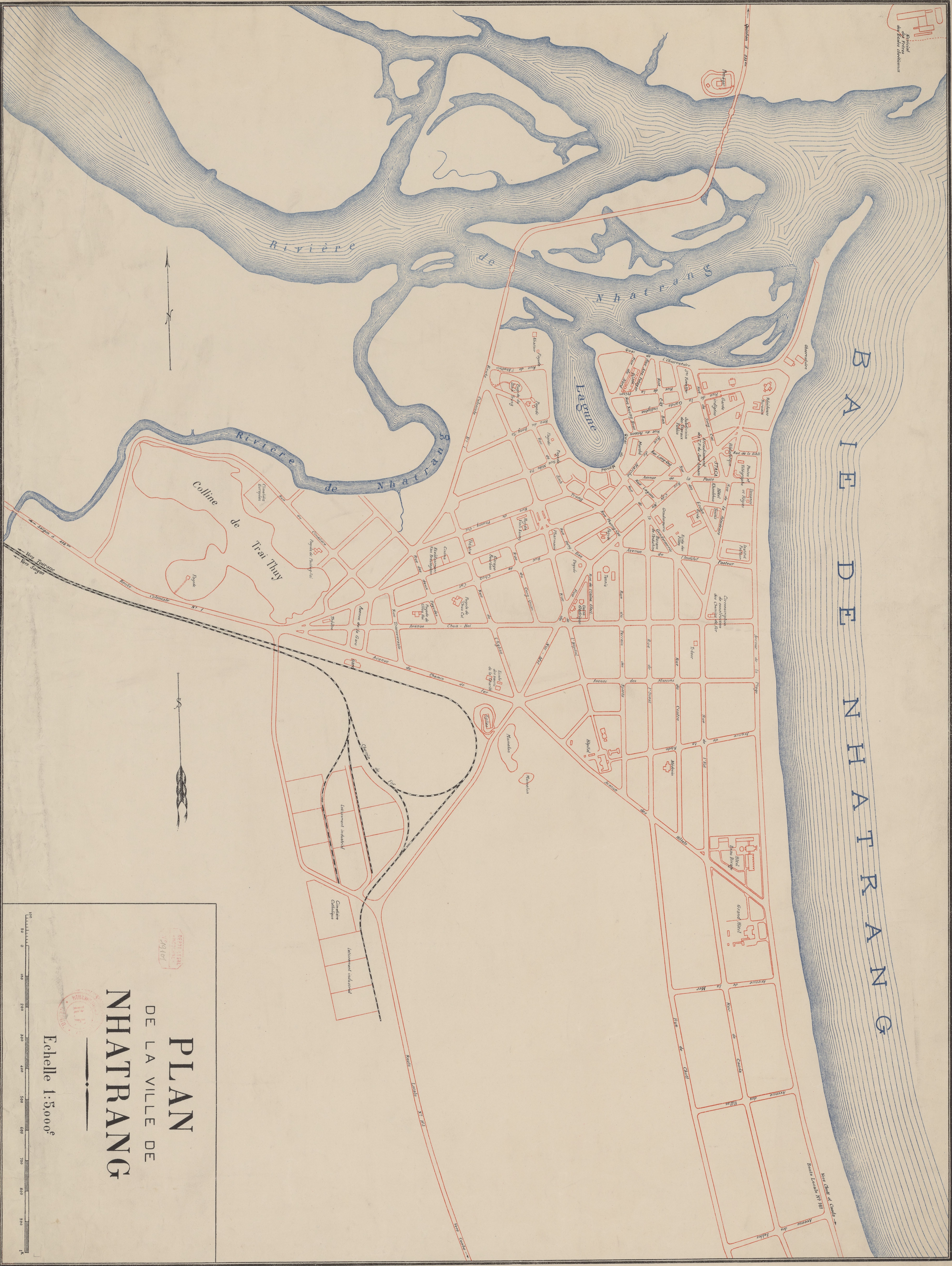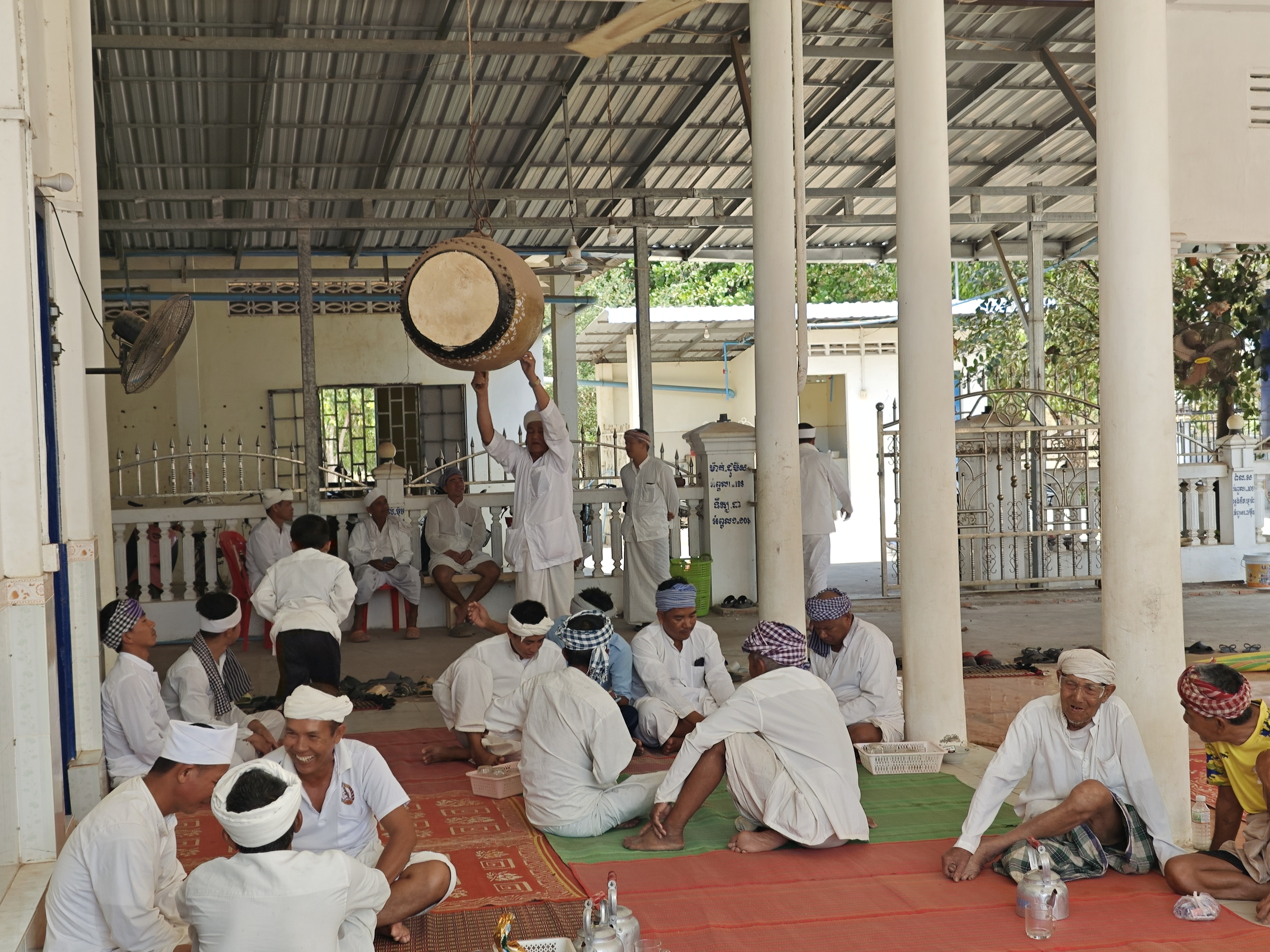|
Chams
The Chams ( Cham: , چام, ''cam''), or Champa people ( Cham: , اوراڠ چمڤا, ''Urang Campa''; or ; , ), are an Austronesian ethnic group in Southeast Asia and are the original inhabitants of central Vietnam and coastal Cambodia before the arrival of the Cambodians and Vietnamese, during the expansion of the Khmer Empire (802–1431) and the Vietnamese conquest of Champa (11th–19th century). From the 2nd century, the Chams founded Champa, a collection of independent Hindu-Buddhist principalities in what is now central and southern Vietnam. By the 17th century, Champa became an Islamic sultanate. Today, the Cham people are largely Muslim, with a minority following Hinduism, both formed the indigenous Muslim and Hindu population in both Cambodia and Vietnam. Despite their adherence to Islam, the Cham people still retain their ancestral practice of matriarchy in family and inheritance. The Cham people speak Cham and Tsat (the latter is spoken by the Utsuls, a Cha ... [...More Info...] [...Related Items...] OR: [Wikipedia] [Google] [Baidu] |
Champa
Champa (Cham language, Cham: ꨌꩌꨛꨩ, چمڤا; ; 占城 or 占婆) was a collection of independent Chams, Cham Polity, polities that extended across the coast of what is present-day Central Vietnam, central and southern Vietnam from approximately the 2nd century CE until 1832. According to History of Champa, earliest historical references found in ancient sources, the first History of Champa#Initial kingdoms, Cham polities were established around the 2nd century, 2nd to 3rd century, 3rd centuries CE, in the wake of Khu Liên's rebellion against the rule of China's Han dynasty#Eastern Han, Eastern Han dynasty, and lasted until when the final Panduranga (Champa), remaining principality of Champa was annexed by Minh Mạng, Emperor Minh Mạng of the Vietnamese Nguyễn dynasty as part of the expansionist Nam tiến policy. The kingdom was known variously as ''Nagaracampa'' (), ''Champa'' (ꨌꩌꨛꨩ) in modern Cham languages, Cham, and ''Châmpa'' () in the Khmer lan ... [...More Info...] [...Related Items...] OR: [Wikipedia] [Google] [Baidu] |
Khmer Empire
The Khmer Empire was an empire in Southeast Asia, centered on Hydraulic empire, hydraulic cities in what is now northern Cambodia. Known as Kambuja (; ) by its inhabitants, it grew out of the former civilization of Chenla and lasted from 802 to 1431. Historians call this period of History of Cambodia, Cambodian history the Angkor period, after the empire's most well-known capital, Angkor. The Khmer Empire ruled or vassalised most of Mainland Southeast Asia and stretched as far north as southern China. The beginning of the Khmer Empire is conventionally dated to 802, when Khmer people, Khmer prince Jayavarman II declared himself ''chakravartin'' (, a title equivalent to 'emperor') in the Phnom Kulen mountains. Although the end of the Khmer Empire has traditionally been marked with the fall of Angkor to the Siamese Ayutthaya Kingdom in 1431, the reasons for the empire's collapse are still debated amongst scholars. Researchers have determined that a period of strong monsoon rains ... [...More Info...] [...Related Items...] OR: [Wikipedia] [Google] [Baidu] |
Utsuls
The Utsuls ([]; ) are a Chamic languages, Chamic-speaking ethnic group which lives on the island of Hainan and are considered one of the People's Republic of China's Unrecognized ethnic groups in China, unrecognized ethnic groups. They are found on the southernmost tip of Hainan, in the two villages of Huihui (回辉) and Huixin (回新) of Tianya district in the city of Sanya. History The Utsuls are thought to be descendants of Cham refugees who fled their homeland of Champa in what is now modern Central Vietnam to escape the Vietnamese invasion. After the Vietnamese completed the conquest of Cham in 1471, sacking Vijaya, the last capital of the Cham kingdom, a Cham prince and about 1,000 followers moved to Hainan, where the Ming dynasty allowed them to stay. Several Chinese accounts record Cham arriving on Hainan even earlier, from 986, shortly after the Vietnamese captured the earlier Cham capital of Indrapura in 982, while other Cham refugees settled in Guangzhou. While ... [...More Info...] [...Related Items...] OR: [Wikipedia] [Google] [Baidu] |
Khmer Rouge
The Khmer Rouge is the name that was popularly given to members of the Communist Party of Kampuchea (CPK), and by extension to Democratic Kampuchea, which ruled Cambodia between 1975 and 1979. The name was coined in the 1960s by Norodom Sihanouk to describe his country's heterogeneous, communist-led dissidents, with whom he allied after the 1970 Cambodian coup d'état. The Kampuchea Revolutionary Army was slowly built up in the forests of eastern Cambodia during the late 1960s, supported by the People's Army of Vietnam, the Viet Cong, the Pathet Lao, and the Chinese Communist Party (CCP). Although it originally fought against Sihanouk, the Khmer Rouge changed its position and supported Sihanouk following the CCP's advice after he was overthrown in a 1970 coup d'état by Lon Nol who established the pro-American Khmer Republic. Despite a massive American bombing campaign (Operation Freedom Deal) against them, the Khmer Rouge won the Cambodian Civil War when they Fall of Phnom Pen ... [...More Info...] [...Related Items...] OR: [Wikipedia] [Google] [Baidu] |
Cham Language
Cham (Cham: , Cham Jawi, Jawi: چم, Latin script: Cam) is a Malayo-Polynesian languages, Malayo-Polynesian language of the Austronesian languages, Austronesian family, spoken by the Cham people, Chams of Southeast Asia. It is spoken primarily in the territory of the former Kingdom of Champa, which spanned modern Southern Vietnam, as well as in Cambodia by a significant population which descends from refugees that fled during the decline and fall of Champa. The Western variety is spoken by 220,000 people in Cambodia and 25,000 people in Vietnam. As for the Eastern variety, there are about 73,000 speakers in Vietnam, for a total of approximately 491,448 speakers. Cham belongs to the Chamic languages, which are spoken in parts of mainland Southeast Asia, Indonesia's Aceh, Aceh Province, and on the island of Hainan. Cham is the oldest-attested Austronesian language, with the Đông Yên Châu inscription being verifiably dated to the late 4th century AD. It has several dialects, wit ... [...More Info...] [...Related Items...] OR: [Wikipedia] [Google] [Baidu] |
Cambodia
Cambodia, officially the Kingdom of Cambodia, is a country in Southeast Asia on the Mainland Southeast Asia, Indochinese Peninsula. It is bordered by Thailand to the northwest, Laos to the north, and Vietnam to the east, and has a coastline along the Gulf of Thailand in the southwest. It spans an area of , dominated by a low-lying plain and the confluence of the Mekong river and Tonlé Sap, Southeast Asia's largest lake. It is dominated by a tropical climate and is rich in biodiversity. Cambodia has a population of about 17 million people, the majority of which are ethnically Khmer people, Khmer. Its capital and most populous city is Phnom Penh, followed by Siem Reap and Battambang. In 802 AD, Jayavarman II declared himself king, uniting the warring Khmer princes of Chenla Kingdom, Chenla under the name "Kambuja".Chandler, David P. (1992) ''History of Cambodia''. Boulder, CO: Westview Press, . This marked the beginning of the Khmer Empire. The Indianised kingdom facilitated ... [...More Info...] [...Related Items...] OR: [Wikipedia] [Google] [Baidu] |
Nha Trang
Nha Trang ( or ; ) is a coastal city and capital of Khánh Hòa Province, on the South Central Coast of Vietnam. It is bounded on the north by Ninh Hoà town, on the south by Cam Ranh city and on the west by Diên Khánh District. The city had a population of about 535,000 people in 2023. An area of of the western communes of Diên An and Diên Toàn is planned to be merged into Nha Trang which will make its new area based on the approval of the Prime Minister of Vietnam in September 2012. Historically, the city was known as Kauthara under rule of the Kingdom of Champa. The city is still home to the famous Po Nagar Towers built by the Champa. Being a coastal city, Nha Trang is a center for marine science based at the Nha Trang Oceanography Institute. The Hon Mun marine protected area is one of four first marine protected areas in the world admitted by the IUCN. Nha Trang is well known for its beaches and scuba diving and has developed into a popular destination for i ... [...More Info...] [...Related Items...] OR: [Wikipedia] [Google] [Baidu] |
Hainan
Hainan is an island provinces of China, province and the southernmost province of China. It consists of the eponymous Hainan Island and various smaller islands in the South China Sea under the province's administration. The name literally means "South of the Sea". The province has a land area of , of which Hainan Island is and the rest is over 200 islands scattered across three archipelagos: Zhongsha Islands, Zhongsha, Xisha Islands, Xisha and Nansha Islands, Nansha. It was part of Guangdong from 1950 to 1988, after which it was made a province of its own and was designated as a special economic zones of China, special economic zone by Deng Xiaoping, as part of the Chinese economic reform program. The Han Han Chinese, Chinese population, who compose a majority of the population at 82%, speak a wide variety of languages including Standard Chinese, Hainanese, Hainam Min, Yue Chinese, Cantonese, Hakka Chinese, etc. Indigenous peoples such as the Hlai people, Hlai, a Kra–Dai l ... [...More Info...] [...Related Items...] OR: [Wikipedia] [Google] [Baidu] |
Central Vietnam
Central Vietnam ( or ), also known as Middle Vietnam or The Middle, formerly known as by the State of Vietnam, by the Republic of Vietnam, or '' Annam'' under French colonial rule, is one of the three geographical regions within Vietnam. The name Trung Bộ was used by the emperor Bảo Đại when he established administrative level higher than Province in 1945, instead of the Trung Kỳ which recalled the French occupation. This name was officially used by government of the Democratic Republic of Vietnam and is popularly used today. The two south central costal provinces Ninh Thuận and Bình Thuận are sometimes seen as part of the Southeast region. Administration Central Vietnam includes 3 administrative regions, which in turn comprises 19 First Tier units. Municipality (thành phố trực thuộc trung ương) Of all 19 First Tier units, 1 is municipality and 18 are provinces. Gallery See also * Northern, Central and Southern Vietnam *Regions of Vietnam ... [...More Info...] [...Related Items...] OR: [Wikipedia] [Google] [Baidu] |
Kan Imam San
The Kan Imam San ("San" often romanized as Sann), sometimes called the Cham Bani of Cambodia, are an Islamic sect that make up about 10% of the population of ethnic Chams in Cambodia. Their spiritual and officially recognized administrative center is the Tralach District of Kampong Chhnang Province, particularly the Au Russey (or Orussey) Mosque, but their historic mosque atop Phnom Oudong is the home to many of their most important rituals and festivals. They are also notably represented in Pursat and Battambang provinces — a geographic trace of villages following the southern side of the Tonlé Sap lake, extending northwest from the Tralach District in Kampong Chhnang — with small numbers in Kandal, Kampot, and Kratie Provinces. They are the last users of Western Cham script, which is used for their holy books as well as some signs and other text within their villages. Internally, they often refer to themselves as the "sevens" due to only praying and visiting their mosque onc ... [...More Info...] [...Related Items...] OR: [Wikipedia] [Google] [Baidu] |
Hinduism
Hinduism () is an Hypernymy and hyponymy, umbrella term for a range of Indian religions, Indian List of religions and spiritual traditions#Indian religions, religious and spiritual traditions (Sampradaya, ''sampradaya''s) that are unified by adherence to the concept of ''dharma'', a Ṛta, cosmic order maintained by its followers through rituals and righteous living, as expounded in the Vedas. The word ''Hindu'' is an exonym, and while Hinduism has been called the oldest religion in the world, it has also been described by the modern term ''Sanātana Dharma'' () emphasizing its eternal nature. ''Vaidika Dharma'' () and ''Arya dharma'' are historical endonyms for Hinduism. Hinduism entails diverse systems of thought, marked by a range of shared Glossary of Hinduism terms, concepts that discuss God in Hinduism, theology, Hindu mythology, mythology, among other topics in Hindu texts, textual sources. Hindu texts have been classified into Śruti () and Smṛti (). The major Hin ... [...More Info...] [...Related Items...] OR: [Wikipedia] [Google] [Baidu] |
Jarai People
Jarai people or Dega (, , or ; , or , ) are an Austronesian people, Austronesian indigenous people and ethnic group native to Vietnam's Central Highlands (Vietnam), Central Highlands (Gia Lai Province, Gia Lai and Kon Tum Province, Kon Tum Provinces, with smaller populations in Đắk Lắk Province), as well as in the Cambodian northeast Province of Ratanakiri. During the Vietnam War, many Jarai persons, as well as members of other Montagnard (Vietnam), Montagnard groups (Khmer Loeu and Degar), collaborated with US Special Forces, and many were resettled with their families in the United States, particularly in North Carolina, after the war. The Jarai language is a member of the Malayo-Polynesian languages, Malayo-Polynesian branch of the Austronesian languages, Austronesian language family. It is related to the Cham language of central Vietnam and Cambodia and the Malayo-Polynesian languages, Malayo-Polynesian languages of Indonesia, Malaysia, Madagascar, Philippines and other ... [...More Info...] [...Related Items...] OR: [Wikipedia] [Google] [Baidu] |







